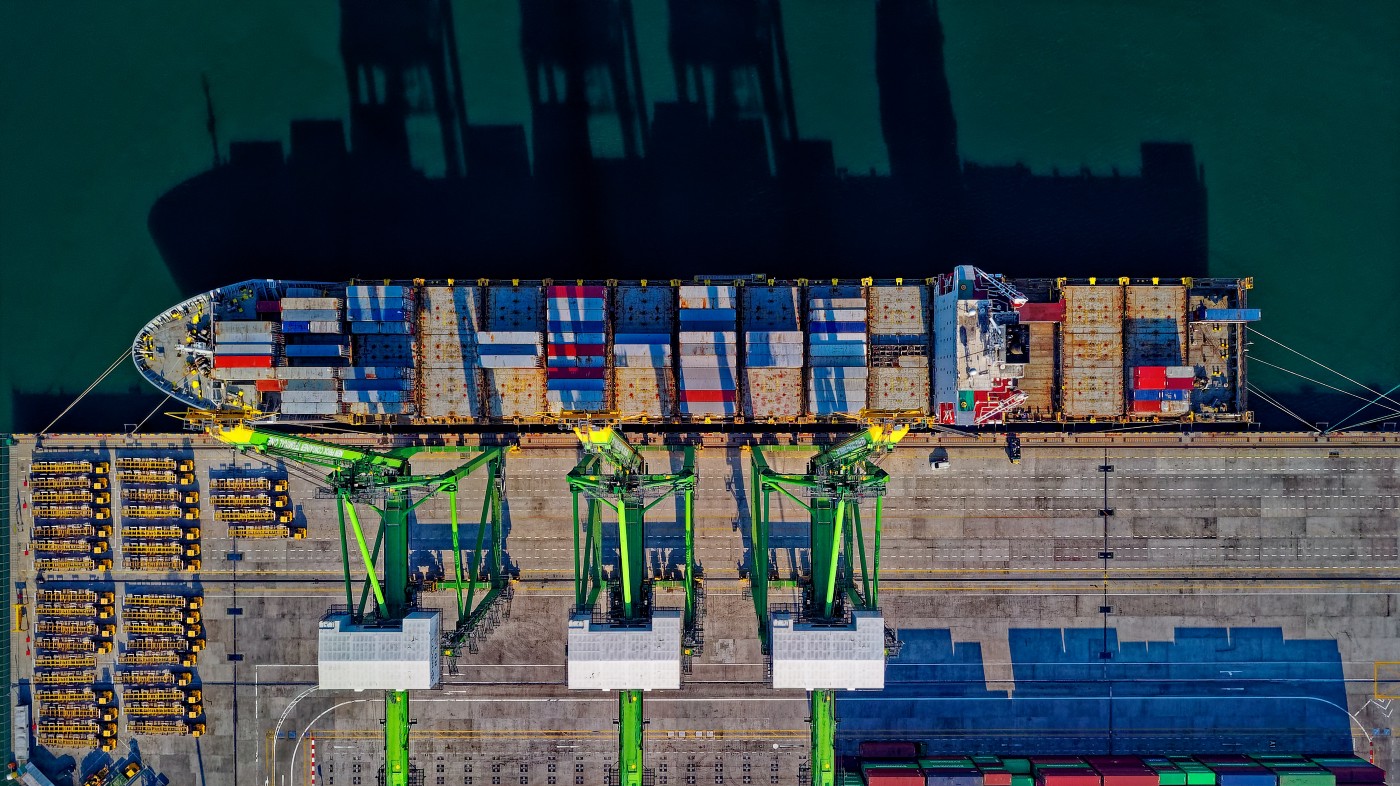Until a few years ago, deep learning was a tool that could hardly be used in real projects and only with a large budget to afford the cost of GPUs in the cloud. However, with the invention of TPU devices and the field of AI at the Edge, this completely changed and allows developers to build things using deep learning in a way that has never been done before.
Copyright: blog.idatha.com – “How Deep Learning can help save human lives at a container terminal”
 In this post, we will explore the use of Coral devices, in conjunction with deep learning models to improve physical safety at one of the largest container terminals in Uruguay.
In this post, we will explore the use of Coral devices, in conjunction with deep learning models to improve physical safety at one of the largest container terminals in Uruguay.
If any of this sounds interesting to you, sit back, and let’s start the journey!
The Port of Montevideo is located in the capital city of Montevideo, on the banks of the “Río de la Plata” river. Due to its strategic location between the Atlantic Ocean and the “Uruguay” river, it is considered one of the main routes of cargo mobilization for Uruguay 🧉 and MERCOSUR 🌎. Over the past decades, it has established itself as a multipurpose port handling: containers, bulk, fishing boats, cruises, passenger transport, cars, and general cargo.
MERCOSUR or officially the Southern Common Market is a commercial and political bloc established in 1991 by several South American countries.
Thank you for reading this post, don't forget to subscribe to our AI NAVIGATOR!
Moreover, only two companies concentrate all-cargo operations in this port: the company of Belgian origin Katoen Natie and the Chilean and Canadian capital company Montecon. Both companies have a great commitment to innovation and the adoption of cutting-edge technology. This philosophy was precisely what led one of these companies to want to incorporate AI into their processes and that led them to us.
Motivation
The client needed a software product that would monitor security cameras in real-time, 24 hours a day. The objective was to detect and prevent potential accidents as well as alert them to the designated people. This AI supervisor would save lives by preventing workplace accidents while saving the company money in potential lawsuits.
In other words, this means real-time detection of people and vehicles doing things that can cause an accident. Until now, this was done by humans who, observing the images on the screens, manually detected these situations. But humans are not made to keep their attention on a screen for long periods, they get distracted, make mistakes and fall asleep. That is why AI is the perfect candidate for this job: it can keep its attention 24 hours a day, it never gets bored and it never stops working.[…]
Read more: www.blog.idatha.com


Until a few years ago, deep learning was a tool that could hardly be used in real projects and only with a large budget to afford the cost of GPUs in the cloud. However, with the invention of TPU devices and the field of AI at the Edge, this completely changed and allows developers to build things using deep learning in a way that has never been done before.
Copyright: blog.idatha.com – “How Deep Learning can help save human lives at a container terminal”
If any of this sounds interesting to you, sit back, and let’s start the journey!
The Port of Montevideo is located in the capital city of Montevideo, on the banks of the “Río de la Plata” river. Due to its strategic location between the Atlantic Ocean and the “Uruguay” river, it is considered one of the main routes of cargo mobilization for Uruguay 🧉 and MERCOSUR 🌎. Over the past decades, it has established itself as a multipurpose port handling: containers, bulk, fishing boats, cruises, passenger transport, cars, and general cargo.
MERCOSUR or officially the Southern Common Market is a commercial and political bloc established in 1991 by several South American countries.
Thank you for reading this post, don't forget to subscribe to our AI NAVIGATOR!
Moreover, only two companies concentrate all-cargo operations in this port: the company of Belgian origin Katoen Natie and the Chilean and Canadian capital company Montecon. Both companies have a great commitment to innovation and the adoption of cutting-edge technology. This philosophy was precisely what led one of these companies to want to incorporate AI into their processes and that led them to us.
Motivation
The client needed a software product that would monitor security cameras in real-time, 24 hours a day. The objective was to detect and prevent potential accidents as well as alert them to the designated people. This AI supervisor would save lives by preventing workplace accidents while saving the company money in potential lawsuits.
In other words, this means real-time detection of people and vehicles doing things that can cause an accident. Until now, this was done by humans who, observing the images on the screens, manually detected these situations. But humans are not made to keep their attention on a screen for long periods, they get distracted, make mistakes and fall asleep. That is why AI is the perfect candidate for this job: it can keep its attention 24 hours a day, it never gets bored and it never stops working.[…]
Read more: www.blog.idatha.com
Share this: